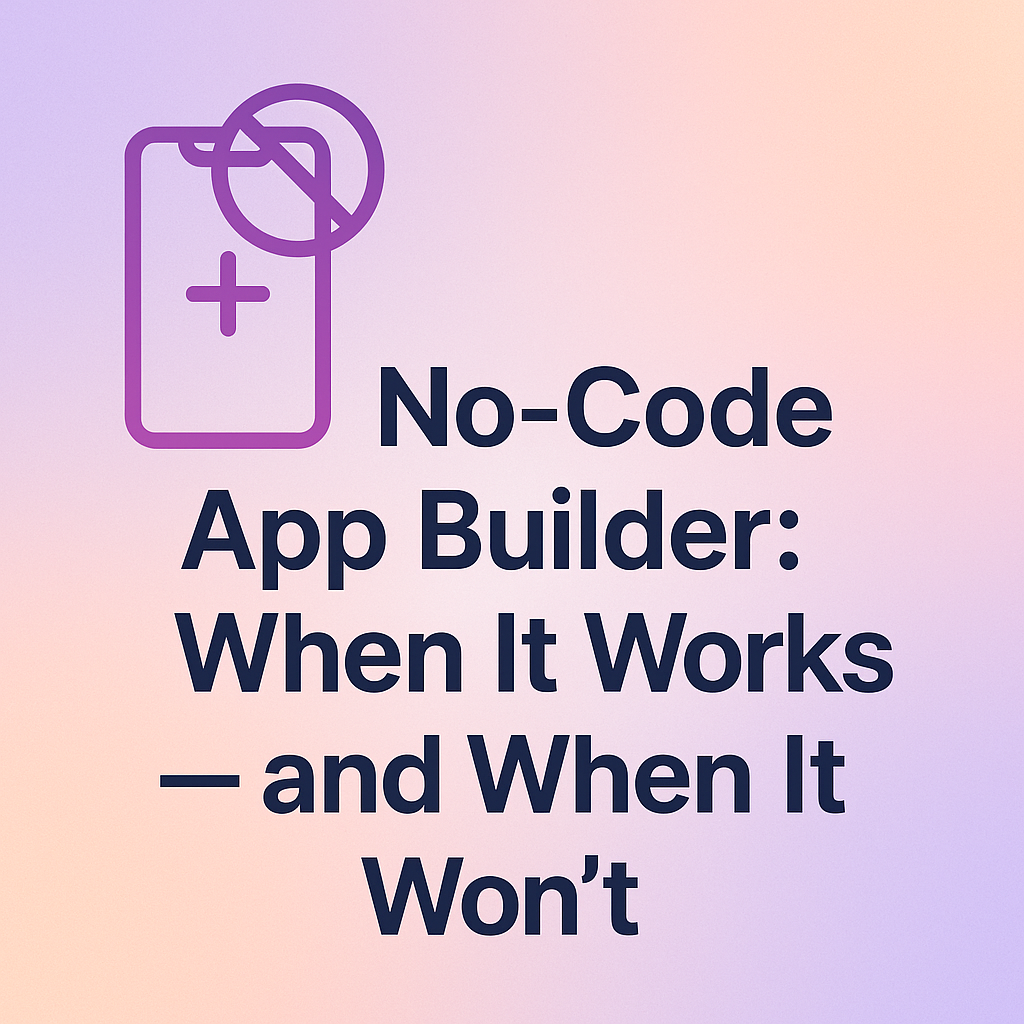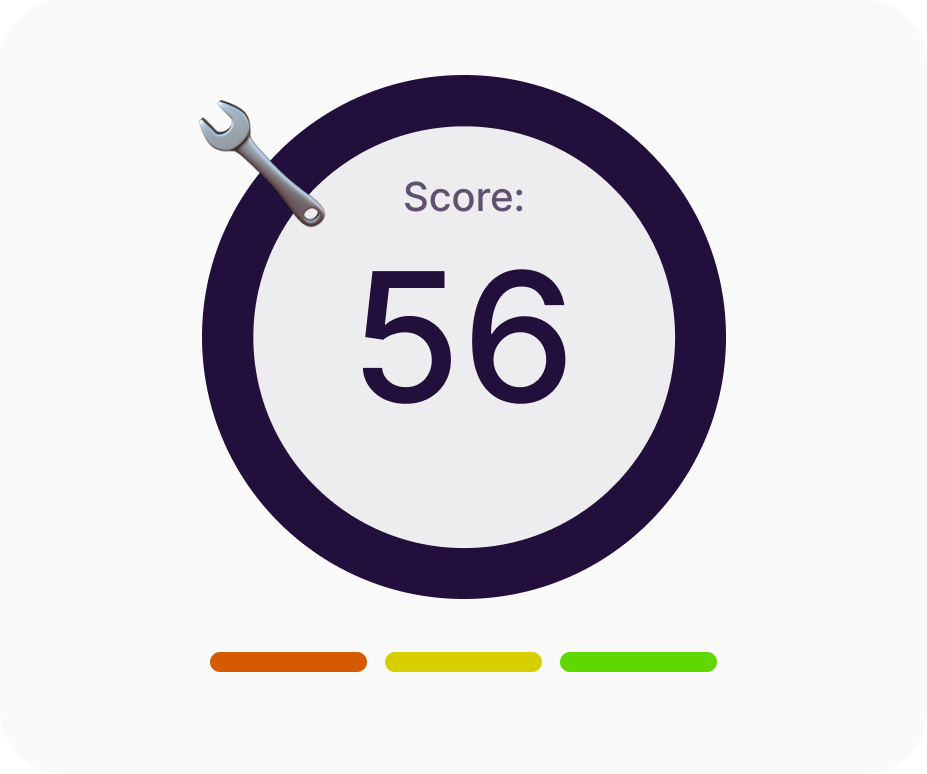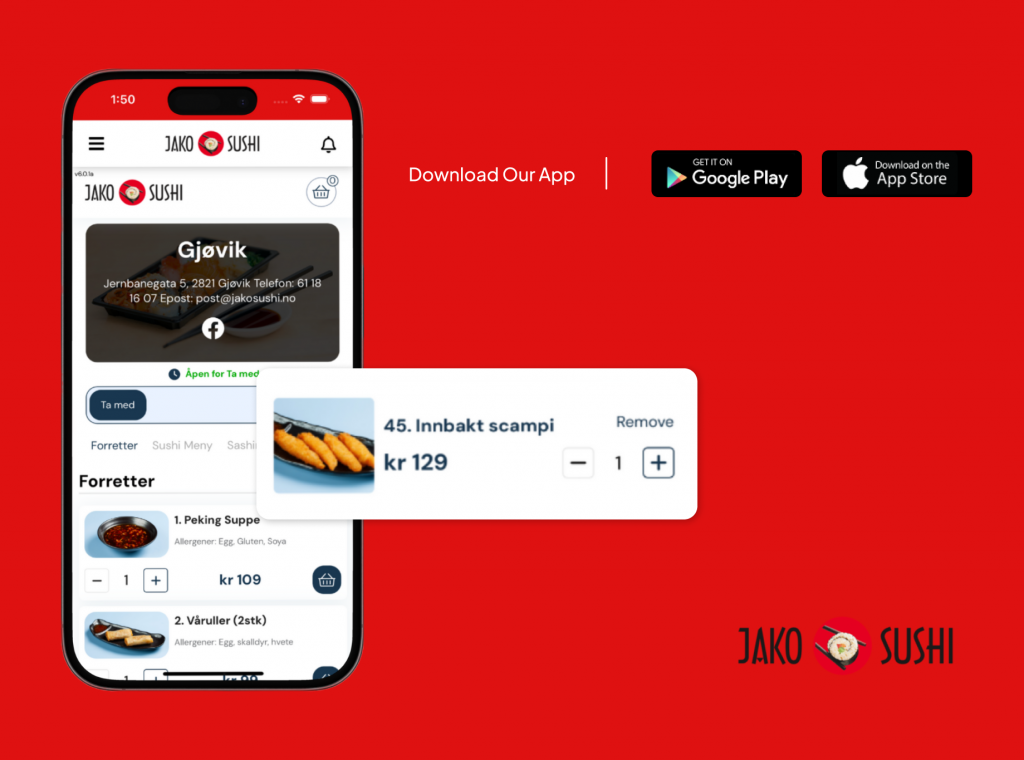
A no-code app builder is a software platform that enables individuals and businesses to build mobile apps without writing a single line of code. Instead of programming languages, users interact with visual editors, drag-and-drop interfaces, and modular templates to design and deploy functional apps — often in hours or days, not weeks or months.
These platforms are part of the broader no-code movement, which has democratized software creation by removing traditional development barriers. In the mobile app space, this movement is especially appealing to:
Solo entrepreneurs launching side hustles
Coaches and consultants creating client-facing tools
E-commerce businesses looking to extend their store presence to mobile
Internal teams prototyping Minimum Viable Products (MVPs)
Startups testing new markets or app ideas quickly
Nonprofits or community groups with limited development budgets
The value proposition is clear: Build an app without hiring developers, skip the complexity, and launch fast.
Whether you’re looking to convert your WordPress site to app, evaluate plugin-based WordPress app builders, or compare WooCommerce to app strategies, this guide has you covered.
Most no-code platforms focus on ease of use and speed. Common features include:
Pre-built components like forms, image galleries, lists, login screens, calendars, etc.
Third-party integrations with services like Google Sheets, Airtable, Stripe, and WooCommerce
Basic logic workflows such as “if this, then that” rules
Preview modes to test the app on simulated mobile devices
Web-app and native app export options (though not always App Store-ready)
Custom domains or branded publishing options (in higher tiers)
Some platforms even offer white-labeling, letting agencies build apps for clients using their own branding.
Here are some of the leading platforms shaping the market:
| Platform | Known For | Limitations |
|---|---|---|
| Adalo | Clean UI and user flows | Limited native integrations |
| Appgyver | Deep customization for pros | Steeper learning curve |
| Glide | Google Sheet-based apps | Limited offline access |
| Thunkable | Mobile-first, visual builder | Slow performance on large apps |
| AppMySite | WordPress-specific support | Mixed publishing success |
| AppyPie | Broad feature set, web apps | Clunky UI, dated templates |
| Softr | Airtable & AI integration | Mostly web apps, not native |
Each platform caters to slightly different audiences — and each comes with tradeoffs in customization, publishing, and scalability.
No-code platforms promote the dream of “build once, launch everywhere.” But the reality is more nuanced.
Yes, you can technically:
Create an app without coding
Publish an MVP or demo quickly
Avoid long development cycles
Save thousands in upfront dev costs
But you may also encounter:
Rigid templates that are hard to fully customize
Lack of advanced features like real-time sync or push notifications
Incompatibility with native app store policies (especially Apple’s)
Weak support that slows you down when issues arise
Extra charges for publishing, white-labeling, or exporting to native apps
Many first-time users start strong but stall out once the app needs more than just a few basic screens. That’s why understanding what no-code tools do well — and where they stop — is essential before committing.
As we move deeper into 2025, a new wave of platforms is making headlines — no-code AI app builders. These tools combine the accessibility of no-code with the growing power of AI and large language models (LLMs) to simplify the app-building process even further.
They promise an even more frictionless experience:
AI-generated app layouts from natural-language prompts
(e.g., “Build me a mobile app for a local bakery with delivery and loyalty points.”)
Automatic UI recommendations based on your website or industry
LLM-powered assistants that walk you through the setup like a chatbot
Prebuilt flows for onboarding, product listings, and booking — suggested dynamically
Emerging players in this space include Softr AI, BuildAI, Pory, and ongoing experiments from major platforms like Bubble and FlutterFlow.
So what’s the catch?
While these platforms are exciting — and do make the first few steps of app creation more intuitive — they don’t solve the deeper limitations that have long challenged no-code platforms. In fact, in many cases, AI can create a false sense of completeness.
Here’s what AI can help with:
Reducing the learning curve
Speeding up UI mockups
Guiding non-technical users
Suggesting templates or flows
But here’s what it can’t fix:
Incompatibility with native store requirements (especially Apple’s strict design and policy rules)
Poor backend integrations, especially for e-commerce platforms like WooCommerce or Shopify
Real-time syncing challenges with live product data or inventory
Lack of proper testing and publishing workflows
App Store rejections due to auto-generated or low-quality UI
In short, AI-enhanced builders are only as good as the underlying no-code platform itself.
AI tools will continue to improve — no doubt. But instead of replacing expert guidance and full-service platforms, they will likely become assistants within larger ecosystems. For example:
Helping you generate a draft app — which a developer team then refines
Recommending layout options — but with custom branding support
Automating store data import — but with human QA and submission support
That’s why platforms like ShopApper blend the best of both worlds: speed, simplicity, and automation — with expert support, custom features, real testing, and full publishing help.
Choosing an app solution isn’t just about budget — it’s about context.
Here’s a detailed breakdown of what most businesses evaluate:
| Situation | Suggested Path |
|---|---|
| No dev team or coding experience | No-code or full-service |
| Limited tech support but some product vision | Full-service is safer |
| Dev team in-house | Custom development or hybrid |
Want to test an MVP or launch a temporary campaign fast?
→ No-code can be useful.
Want to go live fast but with proper setup and branding?
→ A full-service like ShopApper can launch your WooCommerce app in minutes with custom options.
Most no-code builders don’t include app submission help.
This alone causes many no-code apps to be rejected — or never launched.
If your app needs:
Real-time product sync from WooCommerce
Loyalty programs or advanced checkout
Multi-language support
Native device features like push notifications
Then no-code tools fall short. You’ll need full-service or custom support.
Use no-code if you:
Are testing a basic idea or prototype
Only need basic UI — like lists, forms, and simple navigation
Don’t need tight WooCommerce integrations
Don’t plan to scale or customize deeply
Can afford to troubleshoot yourself
Example: A dog walker wants to launch an app showing their schedule and locations. No-code fits perfectly.
Here’s what people often realize too late:
| Limitation | Impact |
|---|---|
| ⚠️ Template lock-in | Can’t customize checkout, loyalty, layout |
| ⚠️ Poor store sync | Products don’t update in real time |
| ⚠️ App submission blocked | No support with Apple/Google compliance |
| ⚠️ Feature add-ons cost more | Push notifications, multi-language, etc. |
| ⚠️ Long-term ownership | You don’t own the source code or control hosting |
Answer a few quick questions and get a custom report on your app potential, missed opportunities, and where to level up.

Many ShopApper customers started with no-code tools like AppMySite, AppyPie, or Glide. But they ran into problems like:
Product syncing breaking
Design stuck in rigid templates
App Store rejections with no help
No custom features allowed
Switched to ShopApper after failed attempts elsewhere
Result: +900% ROI, 20% of orders via app
📲 Full case study →

Switched from no-code to full-service after publishing issues
Result: +200 new app users/month
📲 Case study →

Abandoned no-code due to custom flow limitations
Result: 32% app orders, +1220% ROI
📲 Read more →

| Feature | No-Code Builder | Custom App | ShopApper(Full-Service) |
|---|---|---|---|
| Dev Needed | ❌ | ✅ | ❌ |
| Cost | 💲 | 💲💲💲 | 💲 |
| Speed | ✅ | ❌ | ✅ |
| Publishing Help | ❌ | ⚠️ | ✅ |
| Custom Features | ❌ | ✅ | ✅ |
| Store Sync | ❌ | ✅ | ✅ |
| Support | ⚠️ | ❌ | ✅ |
| Maintenance | ❌ | ⚠️ | ✅ |
More AI prompts
More low-code integrations
Better web-to-app conversion pipelines
But: Support, ownership, and publishing remain challenges.
That’s why hybrid models like ShopApper (a full-service app builder) are bridging the gap.
You get speed, AI-level ease, plus real humans, guidance, and control
| Business Type | Best Fit |
|---|---|
| Basic idea, MVP, personal use | No-code |
| Full control, dev team, unlimited budget | Custom |
| Business owner, growing store, wants real app + support | ShopApper |
Features
Start By Industry



I’m Ece, your Account Manager. I’m eager to learn about your business and assist you in achieving your goals.
Please share some info about your business so I can be fully prepared to answer your queries. I’ll reply within 15-20 minutes. Thanks! ![]()